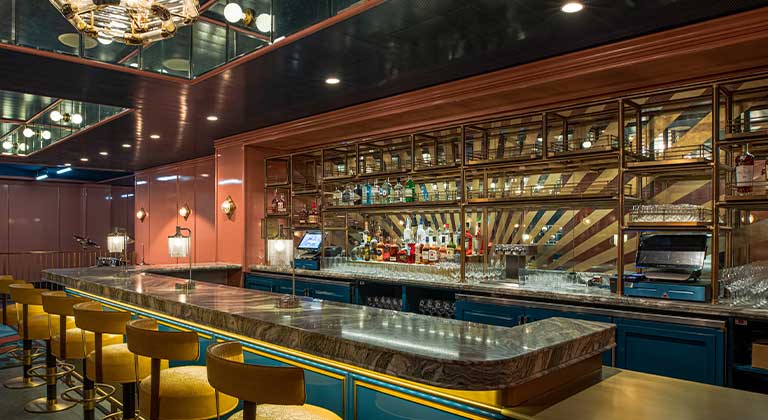What Glaziers Need to Know about Decorative Glass
Our company has witnessed the profound evolution of decorative glass and its uses during the past 75 years. Even in its most practical form, glass contributes an abundance of beauty to the construction world, offering light, reflection, clarity, and openness to the structures it enhances. Decorative glass takes that power to the next level, bringing specific aesthetic goals to life in interior and exterior spaces alike. From mirror to colored, patterned, and etched glass, the products, materials, and installation methods required for decorative glass place it in a category all of its own.

Materials
Several types of decorative glass are available. These include mirror, decorative laminated glass, and etched glass.
Mirror can be flat or beveled, concave or convex. It can be cut in various sizes and shapes and treated to appear antiqued or tinted a different color. Aside from the obvious sites of installation—bathrooms, hotel rooms, etc.—decorative mirror is often used to great effect in bars and restaurants, nightclubs, hotel lobbies, and any setting that can benefit from a touch of glamour.
Decorative laminated glass is manufactured by combining layers of transparent glass with decorative interlayers. Because these interlayers can be made of essentially anything, from film to fabric to paper, this type of glass offers a wide array of color, pattern, texture, and opacity options. Its versatility makes it a popular choice for decorative applications, and common uses include restaurants, office and hotel lobbies, entertainment venues and private residences.
Etched glass is made by applying a corrosive material, such as blasted sand, acid, or other abrasive compounds, to the surface of the glass in a decorative motif. The abrasive element creates a frosted effect by wearing away the smooth surface of the glass. Etched glass is especially popular for providing privacy in areas such as spas, bathrooms, VIP sections of clubs, or retail spaces, among other applications.
Challenges
The primary purpose of decorative glass is aesthetic, so the installation challenges differ from other types of glazing. First, the materials must align with the vision of the architect and/or designer, even if it makes manufacturing more challenging. These customized designs often come with longer lead times due to the level of detail and processing required and their limited availability. Not only is this glass usually more difficult to manufacture, it’s also more specialized; it might be sourced from out-of-state or foreign vendors, contributing to a time-consuming shipping process.
Installation presents many unique challenges as well. Glaziers working with specialty or custom materials have less room for error than those installing more common glass systems. If, for example, a piece of standardized glass breaks onsite, it’s usually not too difficult to source a quick replacement. But if a piece of custom-measured or decorated glass breaks, it will take much longer to replace. Also, the quantity of unique and custom interlayer materials may be scarce, posing additional issues if one-too-many breaks or mismeasurements occur.
As with any construction project, the quality of the final product of a decorative glass installation largely depends on the quality of the team behind it. From the estimators who source and price specialized materials to the project managers who keep deliveries on-task and on time, to the field workers who receive, move, install, test, and finish the work, all members of the glazing company carry a lot of responsibility regarding the success of an installation. When it comes to decorative glass, it’s all about the details, at every stage.
This article originally appeared in USGlass magazine, volume 56, issue 10, October 2021